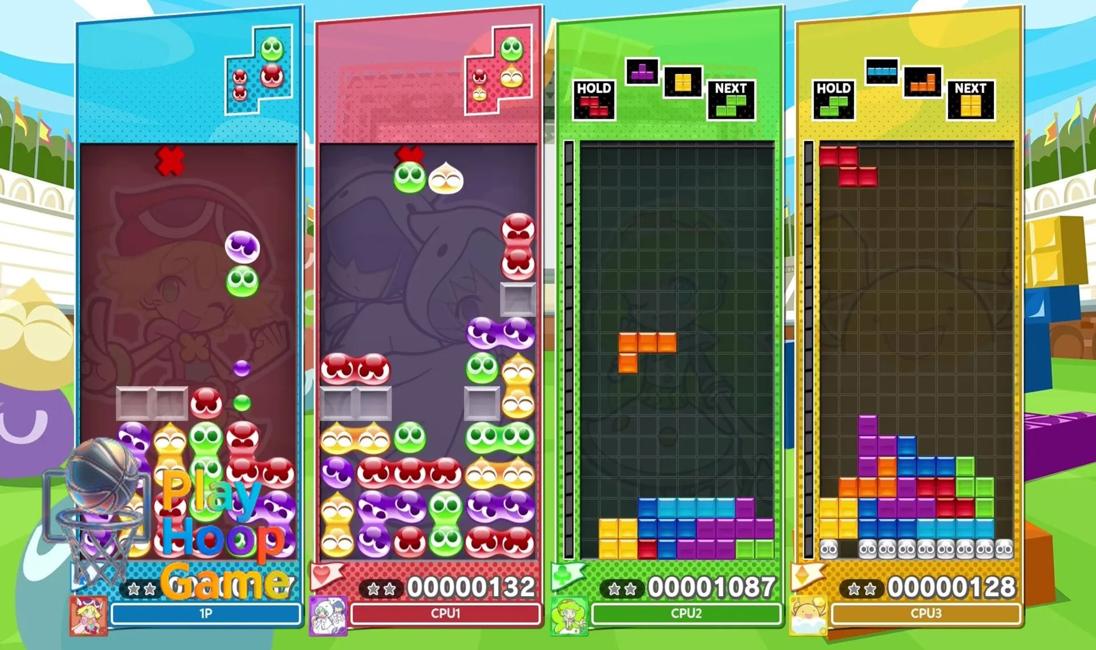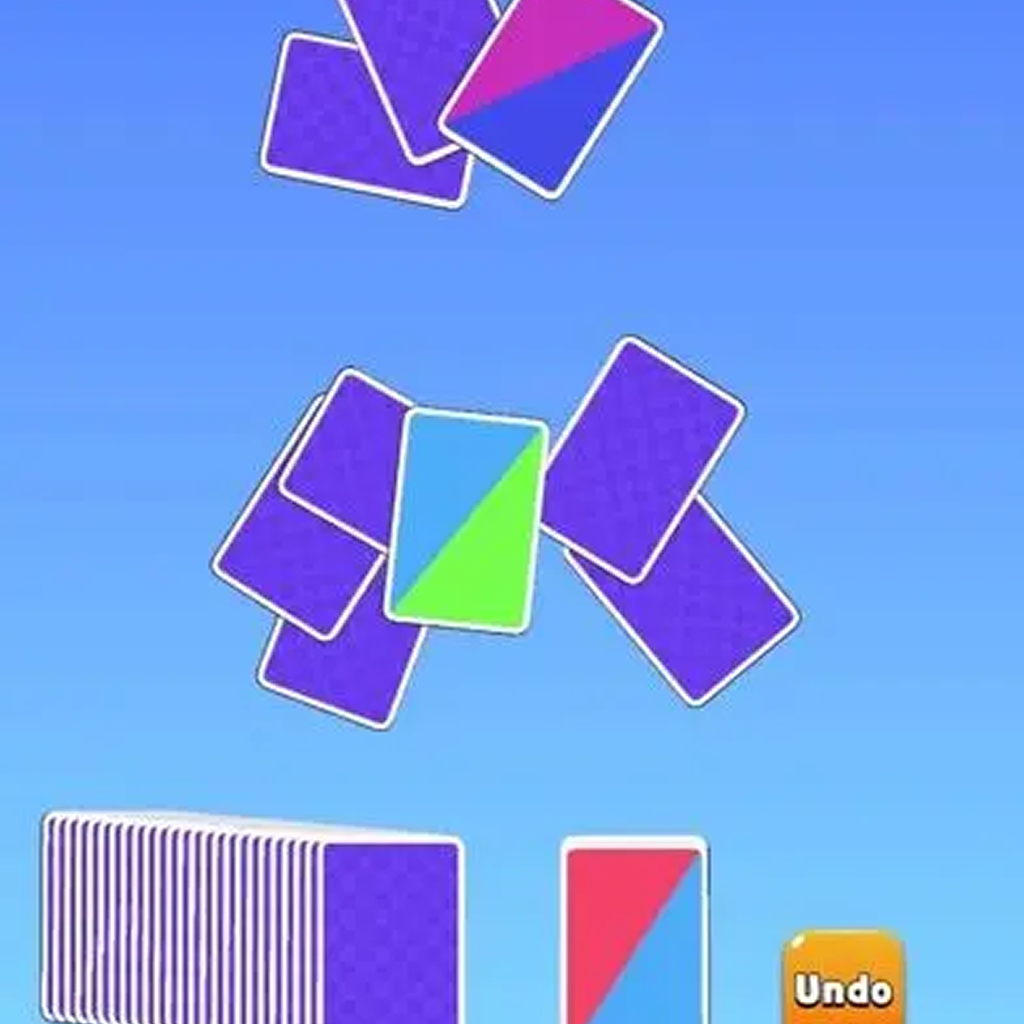There’s a specific kind of panic that sets in during a heated match of Puyo Puyo Tetris. It’s not just the usual puzzle-game anxiety of blocks falling too fast. No, this is different. It’s the existential dread of seeing your opponent, who chose Puyo Puyo, quietly building a monstrous, intricate chain while you’re just trying to clear lines with Tetris. You feel like you’re bringing a well-made, reliable sword to a wizard fight. You clear a Tetris, sending them four measly lines of garbage. They shrug, absorb it into their grand design, and then unleash a 7-chain that floods your screen with an unholy amount of grey nuisance blocks. Game over.
And you know what? It’s absolutely brilliant.
I’ve been playing this series since the first one landed, and that feeling has never gotten old. It’s the beautiful, chaotic, and sometimes deeply unfair collision of two of the greatest puzzle games ever created. When Puyo Puyo Tetris 2 came along, the question on everyone’s mind was simple: how do you improve on something that already felt so complete? The answer, as it turns out, is by adding a layer of delightful RPG nonsense on top.
The Beautiful, Stress-Inducing Marriage of Puyo and Tetris
Let me back up for a second. If you're new here, the premise is simple. You pick your game—either the strategic line-clearing of Tetris or the color-matching, chain-reacting chaos of Puyo Puyo—and face off against someone who may or may not have picked the same. It's an asymmetrical battle that somehow, against all odds, feels balanced.
The original game introduced us to this concept, and the sequel perfects the formula. You have your standard Versus mode, which is the heart of the experience. But then you have Swap, where you’re frantically switching between a Puyo board and a Tetris board every 30 seconds. It’s a masterclass in mental whiplash. Just as you’re setting up a perfect T-Spin, the screen flashes and suddenly you’re staring at a pile of beans, trying to remember how to build a GTR chain. It's glorious.
But the real weirdo of the bunch has always been Fusion mode. This is where both Puyos and Tetriminos fall onto the same board. Puyos squish and fall around the hard Tetris blocks. Clearing a line with Tetris pieces will drop any Puyos above them. It’s… a lot. I’ll be honest, for the first ten hours I played Fusion, I thought it was an abomination. A crime against nature. But then something clicks. You start using I-blocks to intentionally squish Puyos into place, setting up a chain that gets triggered by a line clear. It’s a high-level thinking game that feels less like a traditional puzzle game and more like a competitive version of playing grandmaster chess while the board is on fire.
So, What Does Puyo Puyo Tetris 2S Actually Add to the Party?
Okay, here’s the core of it. The big, shiny new thing in Puyo Puyo Tetris 2S is Skill Battle mode. And I’ve got to admit, I was skeptical at first. It sounded like a gimmick.
It’s not.
Imagine the core game, but now you have a team of three characters, each with unique skills. One might let you clear a few bottom lines instantly, another might restore some of your party's health, and a third might mess with your opponent's board by changing their Puyo colors. You have HP, MP, and you level up your characters by playing. It turns the game into a light RPG.
What this does, and this is the crucial part, is it provides a wonderful on-ramp for new players. Are you constantly getting destroyed online by Tetris gods who can perform three T-Spin Triples before you’ve even decided where to put your first L-block? In Skill Battle, that doesn’t matter as much. A cleverly timed skill can completely turn the tables. It introduces a new layer of strategy that isn't just about raw speed and execution. It’s about timing, team composition, and resource management. It gives everyone a fighting chance, and frankly, it’s just a ton of fun.
Beyond that, the sequel beefs up the Adventure Mode with a new story and map, adds a bunch of new characters, and—thankfully—includes a much more robust lesson mode. If you’ve ever wanted to learn advanced techniques for either game, from setting up stair-step chains in Puyo to mastering the art of the opener in Tetris, the resources are all here. It's a much more welcoming package overall.
Let’s Get Real: Is This Just a Glorified Update?
I keep coming back to this question, because it’s a fair one. If you played the first game to death, you might look at the sequel and think, "Is Skill Battle really worth the full price of admission?"
And the honest answer is... maybe. It depends on what you're looking for.
The core gameplay is, for all intents and purposes, identical. The fundamental magic of Puyo versus Tetris is unchanged. If you are a purist who will only ever play standard Versus mode, then no, the changes might not be enough to justify the jump. But for me, and I suspect for many others, Skill Battle is a game-changer. It’s where I spend half my time now. It’s the mode I pull out when friends who aren’t puzzle game fanatics come over, because the chaos of skills flying around levels the playing field.
It’s an incredible party game. It has that perfect blend of simplicity and depth that makes for legendary local multiplayer nights. It’s the kind of title that belongs in the pantheon of great 2-player games, where rivalries are born and friendships are tested over a single, perfectly placed I-block. And if you’re looking for a puzzle game with an active online scene and a boatload of content to explore, this is still one of the best options out there in the entire Playhoop puzzle category.
The "S" in the title (for the Switch version, at least) largely just refers to the complete package with all the DLC, but the heart of the game is the same across all platforms. It’s a polished, refined, and expanded version of an already-classic game.
A Few Burning Questions I Hear All the Time
Is the story mode any good, or is it just a throwaway tutorial?
Look, no one is winning a BAFTA for this story. It’s goofy, full of anime tropes, and the dialogue is cheesy as all get-out. But is it a throwaway? Absolutely not. It’s the perfect way to learn the game’s many, many modes in a low-stakes environment. The difficulty curve is gentle, and it forces you to get comfortable with everything from Swap to Fusion to the new Skill Battles. It's charming in its own silly way.
Do I need to be a pro at both Puyo Puyo AND Tetris to have fun?
Not at all! That's the beauty of it. Most people are significantly better at one than the other. You can pick your preferred game and stick with it. The game is balanced around this. You can play hundreds of hours without ever touching the other style if you don’t want to (though I recommend giving both a real shot!).
What's the single best mode for a complete beginner?
Start with the Adventure Mode to get a feel for things. But once you're ready to jump into multiplayer, I'd honestly recommend Skill Battle. It's less intimidating than standard Versus. The RPG elements give you another way to compete even if your raw puzzle skills aren't god-tier yet. It’s a fantastic confidence builder.
Is everything you need to know about Puyo Puyo Tetris 2S contained in one article?
Haha, probably not! But this is a darn good start. The truth is, the game has layers upon layers. The best way to learn is to dive in. Don't be afraid to lose. Every match, you learn something new about how to stack, how to chain, or when to hold back and when to go for the kill.
Ultimately, Puyo Puyo Tetris 2S isn't just a sequel; it's a celebration. It's a love letter to two genres, two legacies, smashed together not out of obligation, but out of a genuine curiosity to see what would happen. What happened was magic. A frantic, colorful, block-dropping, bean-popping, endlessly replayable kind of magic.

























